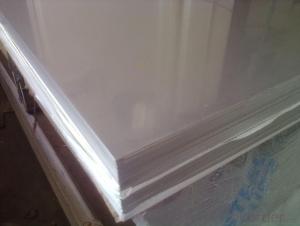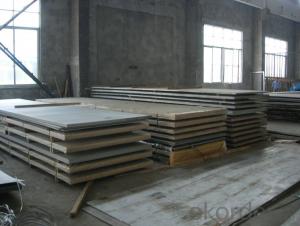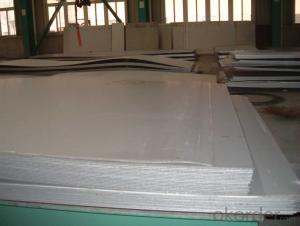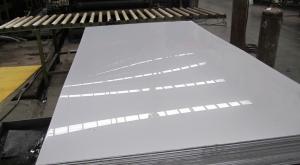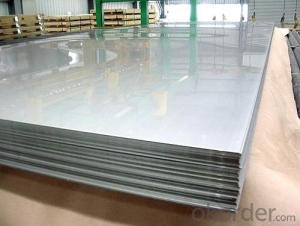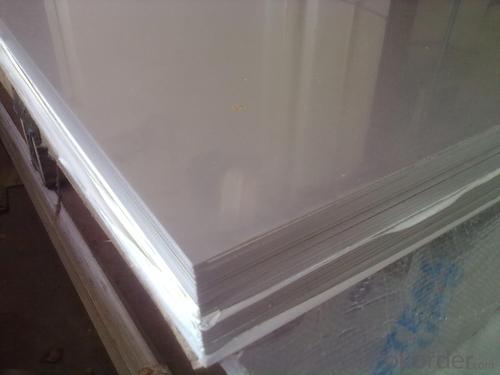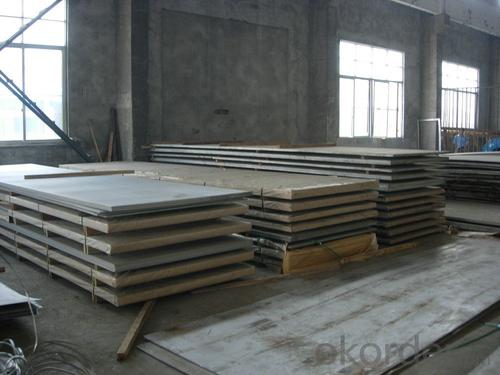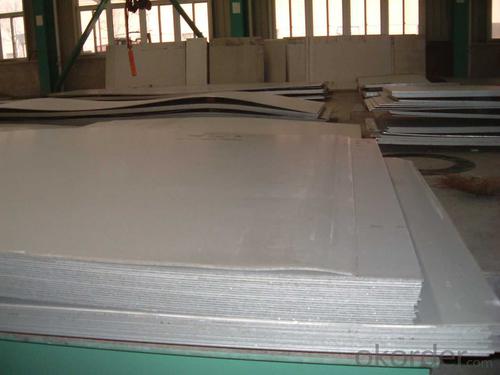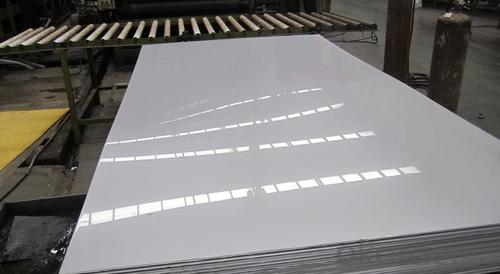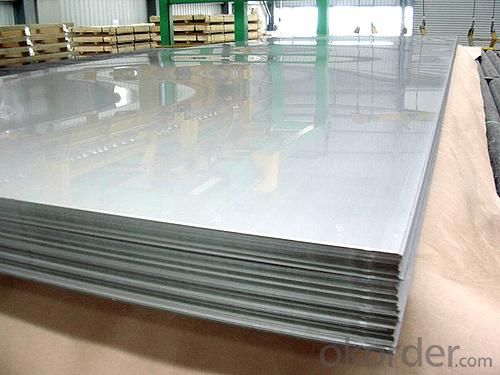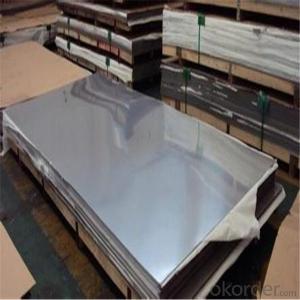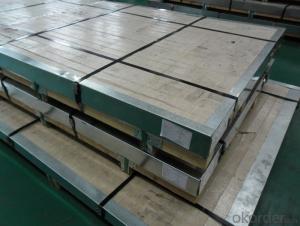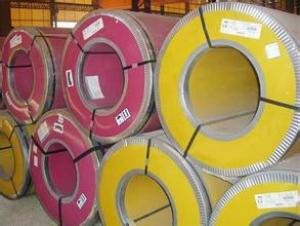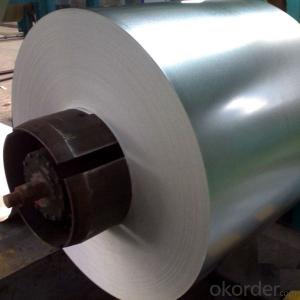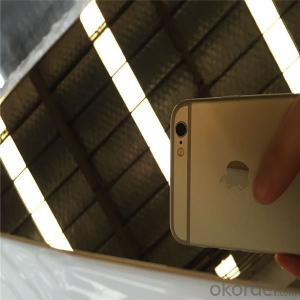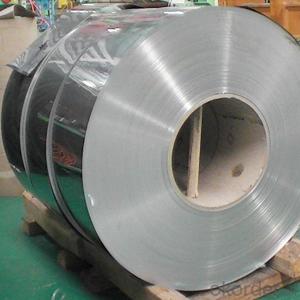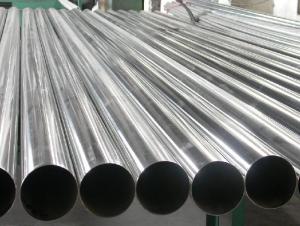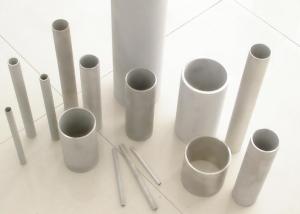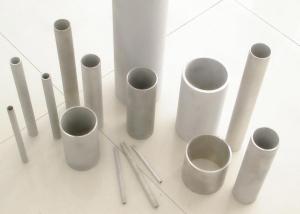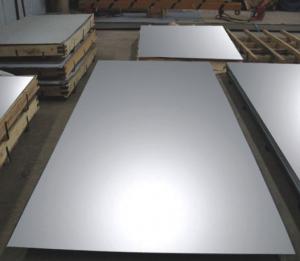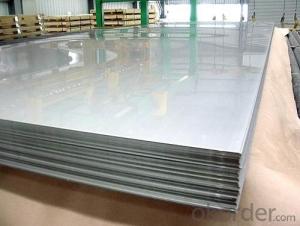Stainless Steel Metal Sheet with 2B Surface Treatment
- Loading Port:
- Shanghai
- Payment Terms:
- TT or LC
- Min Order Qty:
- 50000 m.t
- Supply Capability:
- 5000000 m.t/month
OKorder Service Pledge
OKorder Financial Service
You Might Also Like
Stainless Steel Metal Sheet with 2B Surface Treatment
Description of Stainless Steel Metal Sheet with 2B Surface Treatment:
Stainless steel is a production which not easy rust,acid resistance and corrosion resistance,so it is widelyused in light industry,heavy industry,daily necessities and the decoration industry.my company long-termsupply stainless steel porducts including:stainless steel sheet,stainless steel coil and stainless steel tube.
Main Features of Stainless Steel Metal Sheet with 2B Surface Treatment:
•Escalator, Elevator, Doors
•Furniture
•Production tools, Kitchen appliances, freezers, cold rooms
•Auto Parts
•Machinery and Packaging
•Equipment and Medical devices
•Transport system
Maintance of Stainless Steel Metal Sheet with 2B Surface Treatment:
(1) Regular cleaning and maintenance
(2) Pay attention to prevent the occurrence of the phenomenon of surface scratches
(3) Use soap, weak detergent or warm water to remove surface dust, dirt
(4) In addition to the surface of the binder with alcohol or an organic solvent (ether, benzene)
(5) Use neutral detergent or ammonia solution in addition to surface oil
(6) With 10% nitric acid or abrasive detergent in addition to the surface of the embroider caused by the dirt.
Applications of Stainless Steel Metal Sheet with 2B Surface Treatment:
Stainless steel’s resistance to corrosion and staining, low maintenance and familiar lustre make it an ideal material for many applications. There are over 150 grades of stainless steel, of which fifteen are most commonly used. The alloy is milled into coils, sheets, plates, bars, wire, and tubing to be used in cookware, cutlery, household hardware, surgical instruments, major appliances, industrial equipment Storage tanks and tankers used to transport orange juice and other food are often made of stainless steel, because of its corrosion resistance and antibacterial properties. This also influences its use in commercial kitchens and food processing plants, as it can be steamcleaned and sterilized and does not need paint or other surface finishes..
Specifications of Stainless Steel Metal Sheet with 2B Surface Treatment:
Description | steel sheet,hot rolled steel sheet,cold rolled steel sheet, steel sheet,sheet,steel plate |
Standard | ASME, ASTM, EN ,BS,GB,DIN, JIS etc |
Application | Steel sheet applies to construction field, ships building industry, petroleum & chemical industries, war and electricity industries, food processing and medical industry, boiler heat exchanger, machinery and hardware fields. |
Packaging | Standard export sea-worthy packing |
Delivery time | 10-30 days |
Quality | No.1 |
Productivity | 500 tons/Day |
Note | Our company has cooperative relation between the domestic agents. Stainless steel sheet can be made accordingto the customers requirements. Fasten delivery. Quality assured. |
Contacts | If you have any question,please feel free contact me. |
Surface Finish Characteristics of Stainless Steel Metal Sheet with 2B Surface Treatment:
| Surface finish | Characteristics and application |
| 2B | The surface brightness and flatness of no2B is better than no2D. then through a special surface treatment to improve its mechanical properties,No2B could nearly satisfy comprehensive uses. |
| No.1 | Polished with abrasive belt of grit#100-#200, have better brightness with discontinuous coarse stria, used as inner and external ornaments for building, electrical appliances and kitchen utensils etc. |
| No.4 | Polished with abrasive belt of grit #150-#180,have better brightness with discontinuous coarse stria, but thinner than No3, are used as bathtub buildings inner and external ornaments electrical appliances kitchen utensils and food processing equipment etc. |
| HL | Polished with abrasive belt of grit #150-#320 on the NO.4 finish and has continuous streaks, mainly used as buildings ornaments elevators, door of building, frontal plate etc. |
| BA | Cold rolled, bright annealed and skin-passed, the product have excellent brightness and good reflexivity like mirror, kitchen apparatus, ornament etc. |
| 8K | The product have excellent brightness and prefer reflexivity can to be the mirror. |
Images of Stainless Steel Metal Sheet with 2B Surface Treatment:
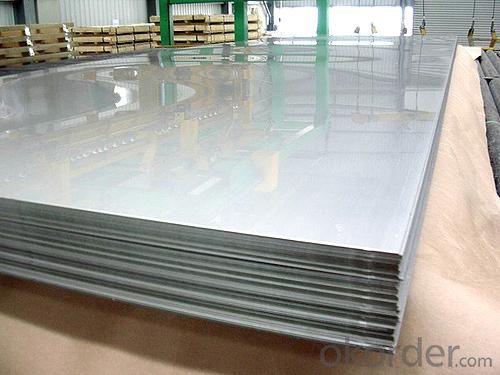
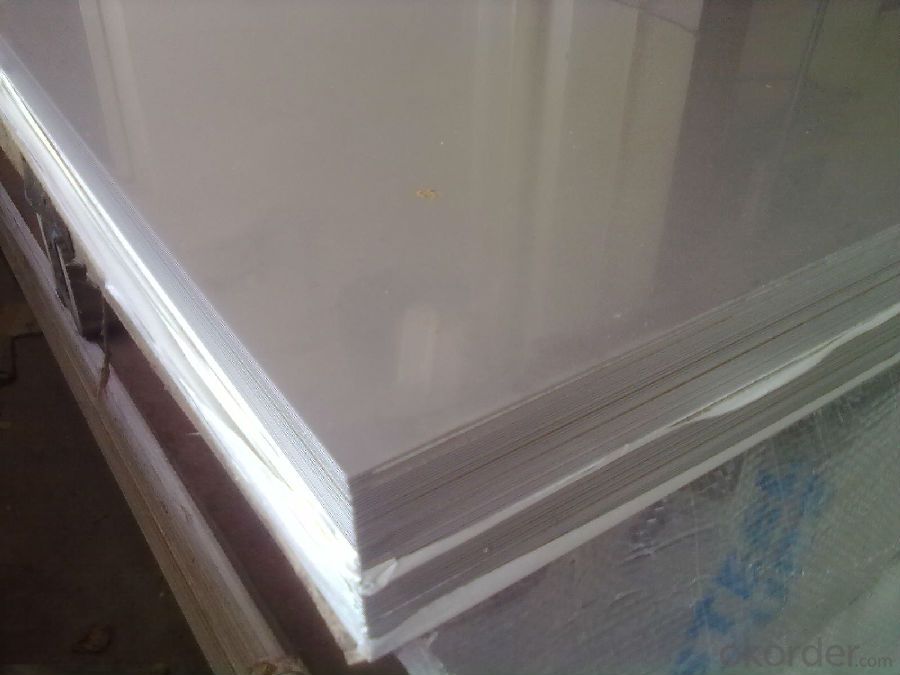
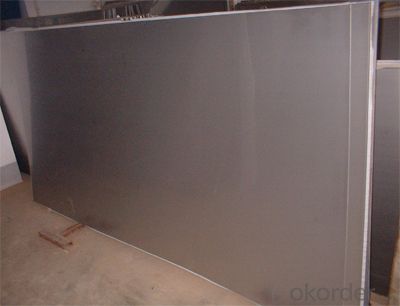
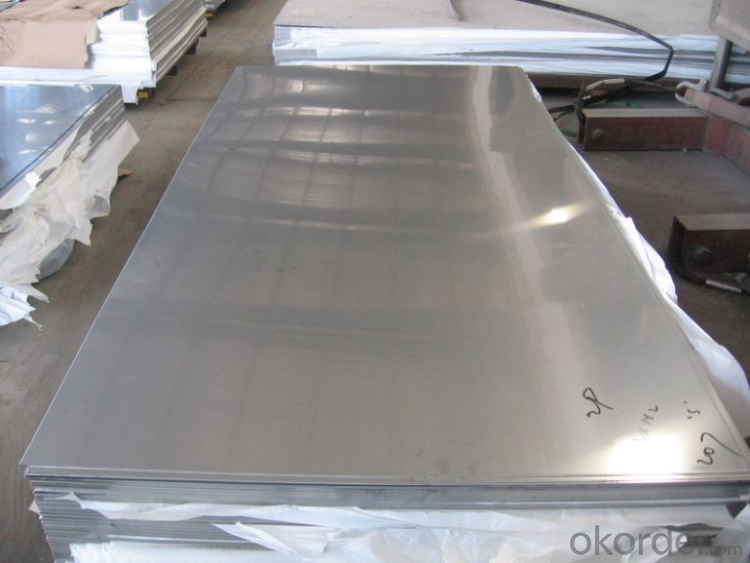
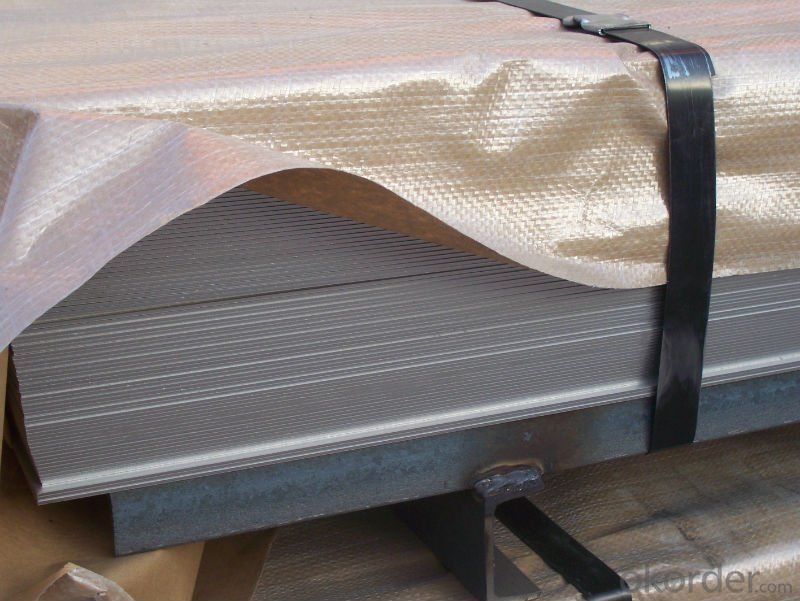
Sandard Seaworth Packing(wooden packing with water proof paper):

FAQ:
1. What are we supplying?
We are specialized in producing stainless steel coil, stainless steel (plate/sheet), and duplex stainless steel for a prelonged period. We are currently supplying grade of steel of 201/202,304/304L, 310S/309S/316L/316Ti/321, 410/420/430/443/444/409L, and 904L.
2. How Many years experience do we have?
We have been exported to more than 20 countries in the past 15 years.
3. How long do we usually reply your request?
We always reply our customer within 24 hours.
Our company adheres to the tenet of "survival by quality, build brand by reputation, win market by prices and innovate to develop", has developed international markets and the products are well sold in many countries as Singapore, Indonesia, South Korea, Dubai, Pakistan, Sri Lanka, Vietnam, Iran, Malaysia, Mexico, Chile, Brazil, Holland, Italy, Belgium, Russia, Moldova, Paraguay, Uruguay, Germany, Spain, USA etc. More than 40 countries.; commonly we have more than 500tons stainless steel materials in stock; so w can arrange the soonest delivery too; also we hope we will have chance to cooperate with your esteemed company!
- Q: What are the different types of stainless steel sheet edges?
- There are three main types of stainless steel sheet edges: mill edge, slit edge, and deburred edge. 1. Mill Edge: This is the most common type of stainless steel sheet edge. It is produced during the manufacturing process and is characterized by a rough, unfinished edge. The mill edge is typically straight and perpendicular to the surface of the sheet. It is suitable for most applications where a smooth edge is not required. 2. Slit Edge: Slit edge stainless steel sheets are created by cutting large rolls of stainless steel into narrower widths. The edges of these sheets are smoother and more precise compared to the mill edge. Slit edge sheets are commonly used in applications where a more polished and precise edge is needed, such as in architectural finishes or fabrication processes. 3. Deburred Edge: A deburred edge is achieved by removing any sharp or rough edges from the stainless steel sheet. This is done to enhance safety and prevent injury during handling or installation. Deburring can be done through various methods, such as grinding, sanding, or using specialized tools. The resulting edge is smooth and free from any burrs or sharp protrusions. It is important to note that the choice of edge type depends on the specific application and requirements of the stainless steel sheet. Each edge type has its own advantages and limitations, and it is crucial to consider factors such as aesthetics, functionality, and safety when selecting the appropriate edge for a particular project.
- Q: Can stainless steel sheets be used for electrical applications?
- Certainly, electrical applications can make use of stainless steel sheets. Stainless steel, an alloy comprising chromium, possesses exceptional resistance against corrosion and oxidation. Such resistance proves advantageous in electrical applications that involve exposure to moisture or harsh surroundings. Stainless steel sheets find utility in a range of electrical components, including electrical enclosures, control panels, junction boxes, and electrical connectors. The robustness and durability of stainless steel render it ideal for these applications, ensuring a dependable and enduring solution. Moreover, the non-magnetic properties of stainless steel offer added benefits in specific electrical applications where minimizing magnetic interference is crucial.
- Q: Can stainless steel sheets be used for water treatment equipment?
- Yes, stainless steel sheets can be used for water treatment equipment. Stainless steel is highly resistant to corrosion and oxidation, making it an ideal material for water treatment applications. It is commonly used for tanks, pipes, valves, and other components in water treatment systems. Stainless steel's durability and hygienic properties make it suitable for handling various types of water, including drinking water, wastewater, and industrial process water. Additionally, stainless steel is easy to clean and maintain, ensuring the longevity and efficiency of water treatment equipment.
- Q: Are stainless steel sheets suitable for elevator doors?
- Stainless steel sheets make for suitable elevator doors. They are a popular pick for this purpose because they are durable, resistant to corrosion, and aesthetically pleasing. Elevator doors endure constant use and exposure to various elements, which is why stainless steel is an ideal material. It doesn't easily rust or corrode. Furthermore, stainless steel sheets are easy to maintain and clean, ensuring a long-lasting and visually appealing appearance. The versatility of stainless steel also allows for customization in terms of finishes, textures, and patterns, which means elevator doors can be designed to match the desired aesthetic of the building or space. In summary, stainless steel sheets are a reliable and fitting option for elevator doors.
- Q: Inspection method for stainless steel welding
- 1) measurement, in strict accordance with the requirements of the drawings, and to ensure that within tolerance. Along the column, a top cover, and frame, beam should be straight, without distortion, the straightness (nonstraightness) should meet the requirements on the table diagonal method.2) no distortion, swing, rotation or displacement are allowed in the structures which are completely fixed
- Q: How do you prevent discoloration or staining on stainless steel sheets?
- To prevent discoloration or staining on stainless steel sheets, there are several steps one can take. First, it is important to clean the sheets regularly using mild soap or detergent and warm water. Avoid abrasive cleaners or scrub brushes that could scratch the surface. After cleaning, rinse thoroughly with clean water and dry with a soft cloth to prevent water spots. In addition, it is crucial to avoid using harsh chemicals like bleach, ammonia, or chlorine-based cleaners on stainless steel sheets. These chemicals can cause discoloration or staining. Instead, opt for stainless steel-specific cleaners or natural alternatives such as vinegar or lemon juice. Proper storage is also essential. Stainless steel sheets should be kept in a clean and dry environment to prevent exposure to moisture or humidity. Moisture can lead to corrosion or rust, resulting in discoloration. If the sheets are stored outdoors, make sure to adequately cover them to protect against rain or snow. Applying a protective coating or sealant on stainless steel sheets can help prevent discoloration or staining. There are various products available specifically designed for stainless steel protection. It is important to follow the manufacturer's instructions for application and reapplication if necessary. Furthermore, it is important to avoid contact between stainless steel sheets and other reactive metals such as iron, copper, or aluminum. When these metals come into contact with stainless steel, a chemical reaction called galvanic corrosion can occur, leading to discoloration and staining. To prevent this, ensure separation or isolation between stainless steel and reactive metals. Regular maintenance is crucial in preserving the appearance and integrity of stainless steel sheets. Regularly inspect the sheets for any signs of discoloration, staining, or damage. Address any issues promptly to prevent further deterioration. If stubborn stains are present, use a non-abrasive stainless steel cleaner and a soft cloth to gently rub the affected area in the direction of the grain. By following these preventive measures, the appearance and integrity of stainless steel sheets can be maintained, ensuring they remain free from discoloration or staining for an extended period of time.
- Q: What is the function of a stainless steel plate at the top of the steel chimney?
- At present, the commonly used classification methods are classified according to the characteristics of the steel structure, the chemical composition of steel and the combination of the two. Generally divided into martensitic stainless steel, ferritic stainless steel, austenitic stainless steel, duplex stainless steel and precipitation hardening stainless steel, etc., or divided into chromium, stainless steel and nickel stainless steel two categories.
- Q: Can stainless steel sheets be used for escalator steps?
- Certainly, escalator steps can be made from stainless steel sheets. The reason stainless steel is highly favored for escalator steps is its exceptional durability, strength, and resistance to corrosion. It can endure the ceaseless foot traffic, hefty loads, and daily wear and tear that escalator steps face. Moreover, stainless steel possesses a sleek and contemporary look that contributes to the overall aesthetic charm of escalators. Consequently, stainless steel sheets emerge as a dependable and pragmatic option for escalator steps in a range of commercial and public environments.
- Q: What's the cheapest kind of stainless steel plate? What's the model and how much is it?
- Austenitic stainless steel (non-magnetic) inside the 201 material is the cheapest, the average price of 9000 yuan / ton, including tax, accounting for 7.93 of the proportion of formula: thickness * width * length * weight = weight * unit price = per price
- Q: Are stainless steel sheets good for chemical processing?
- Yes, stainless steel sheets are excellent for chemical processing. Stainless steel is known for its resistance to corrosion and chemical damage, making it a popular choice in various industries, including chemical processing. The high levels of chromium and nickel in stainless steel make it highly resistant to chemical reactions, even with harsh chemicals and acids. Additionally, stainless steel sheets are easy to clean, maintain, and sterilize, which is crucial in chemical processing environments where cleanliness and hygiene are paramount. The durability and strength of stainless steel sheets also ensure their longevity and ability to withstand high temperatures and pressure, making them suitable for a wide range of chemical processing applications. Overall, stainless steel sheets are a reliable and efficient choice for chemical processing due to their resistance to corrosion, ease of maintenance, and durability.
Send your message to us
Stainless Steel Metal Sheet with 2B Surface Treatment
- Loading Port:
- Shanghai
- Payment Terms:
- TT or LC
- Min Order Qty:
- 50000 m.t
- Supply Capability:
- 5000000 m.t/month
OKorder Service Pledge
OKorder Financial Service
Similar products
Hot products
Hot Searches
Related keywords
